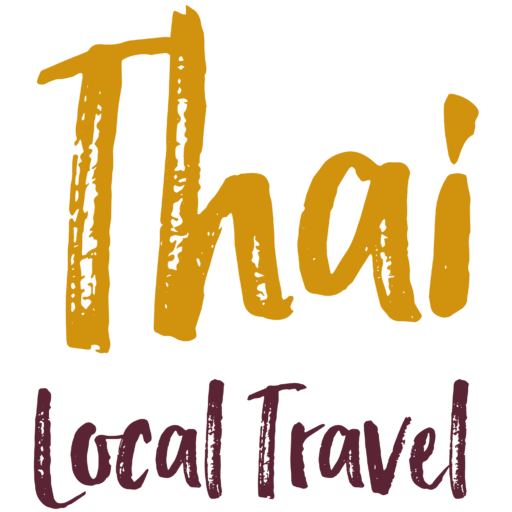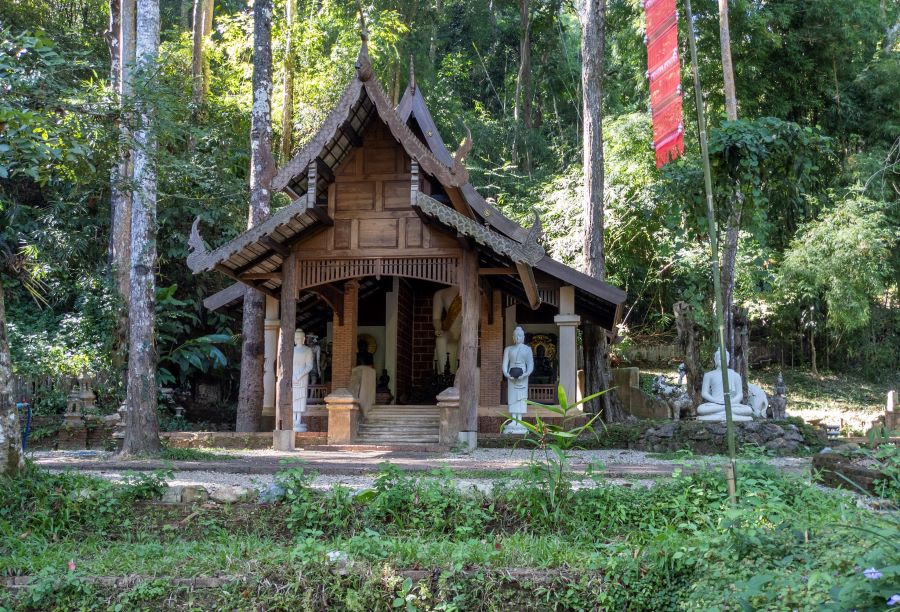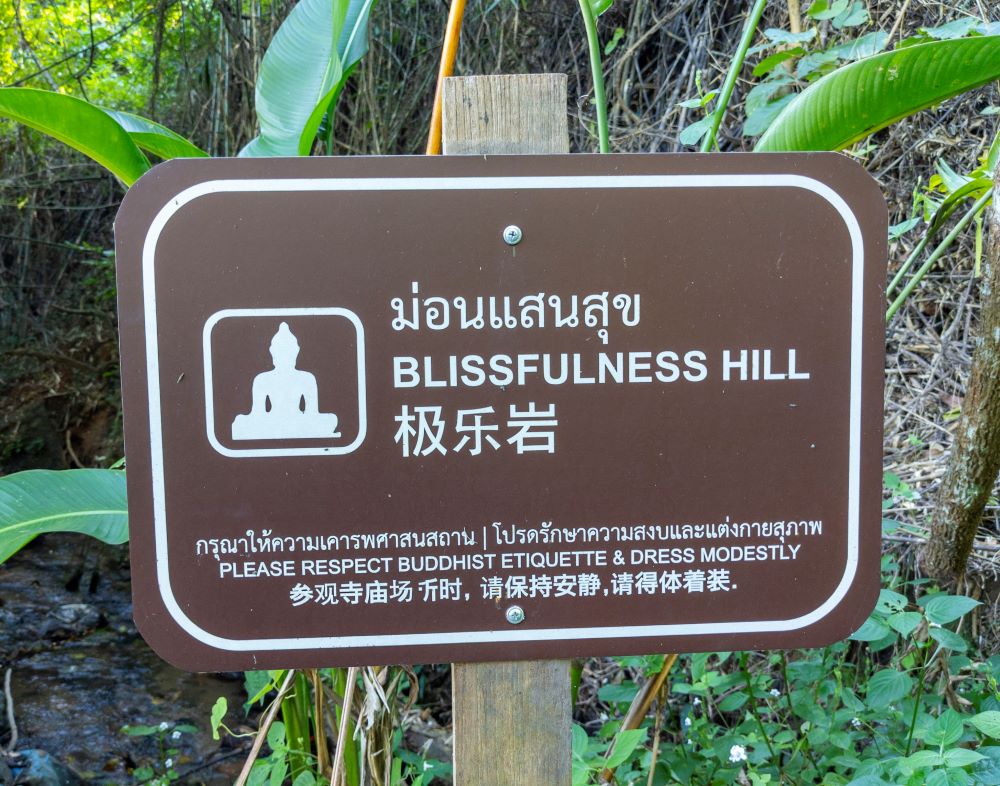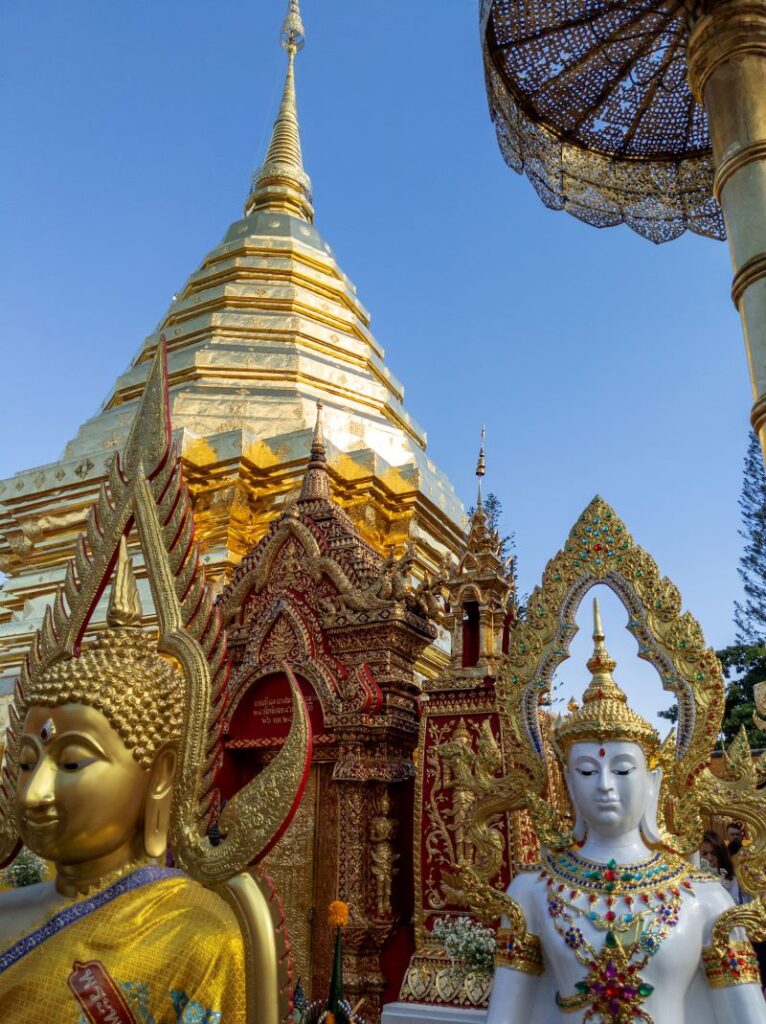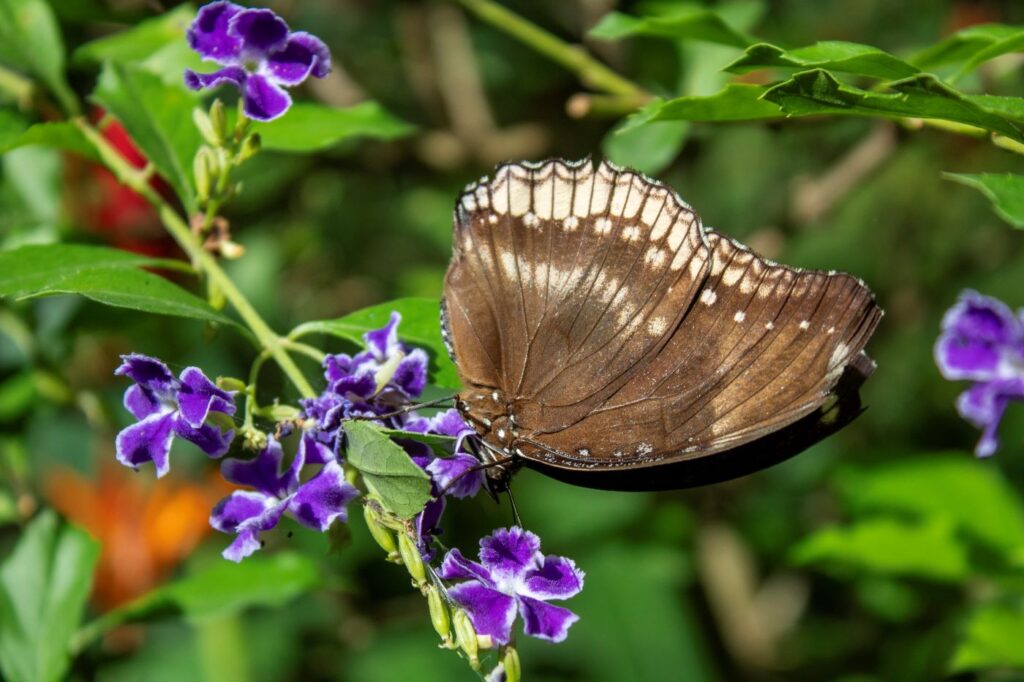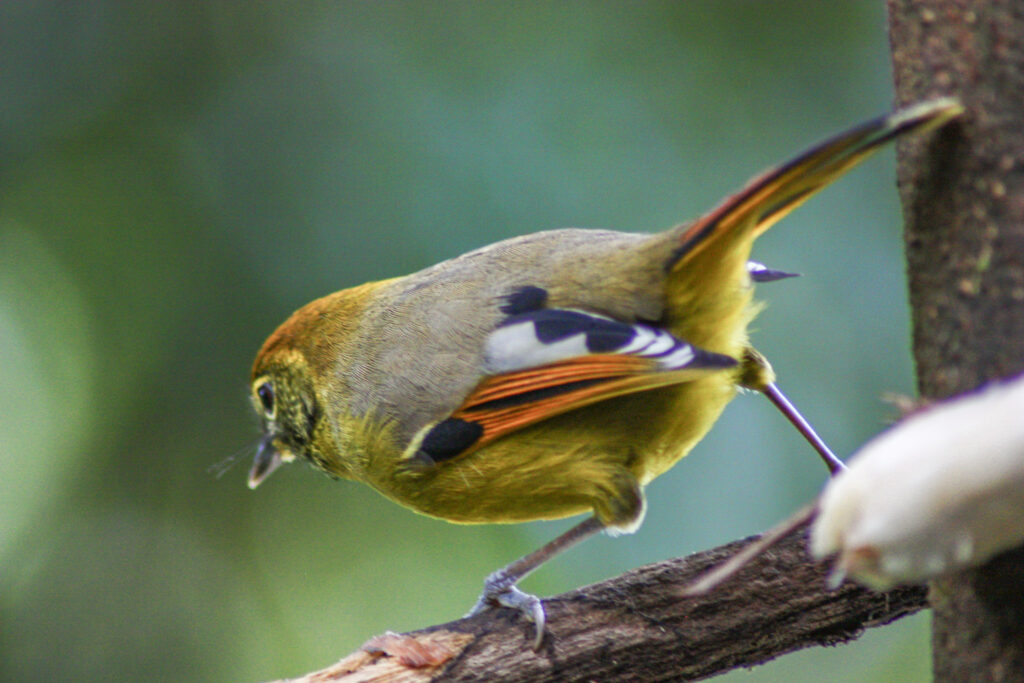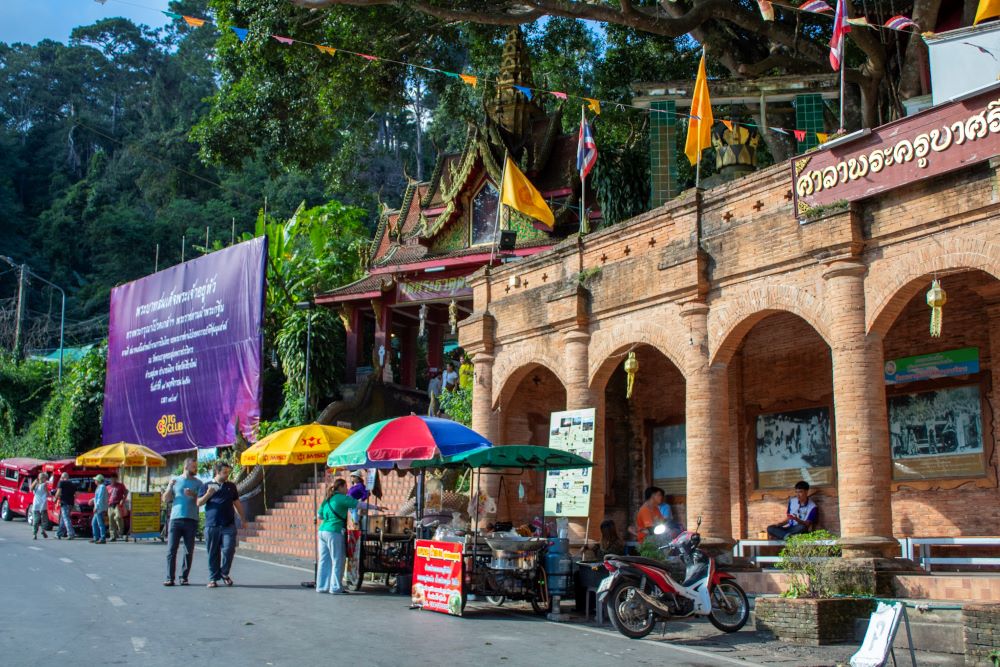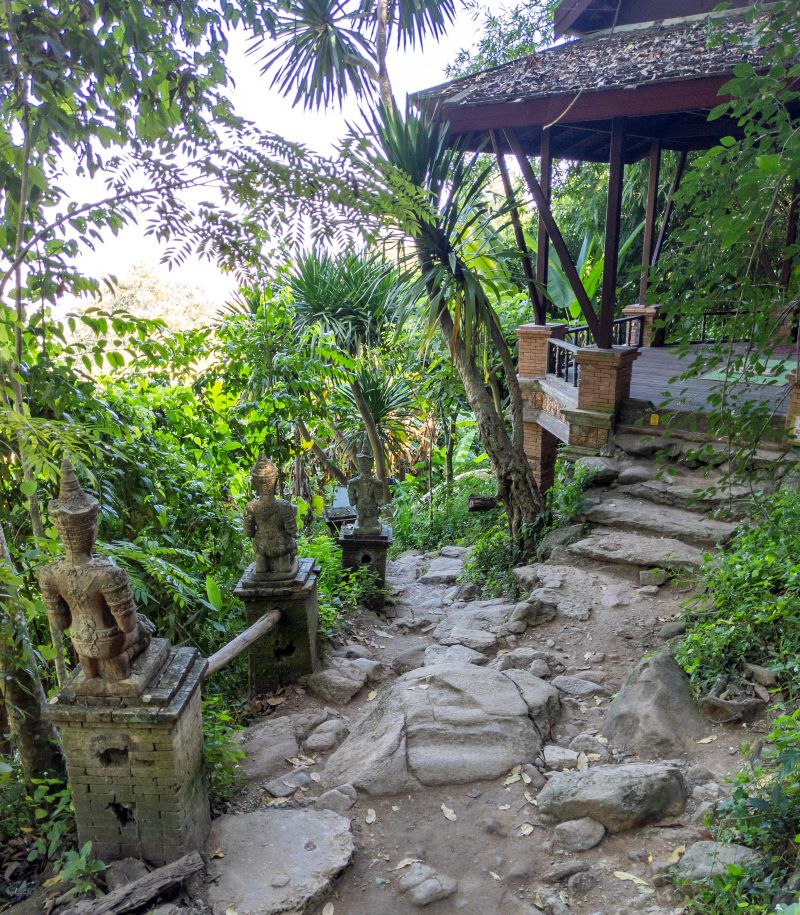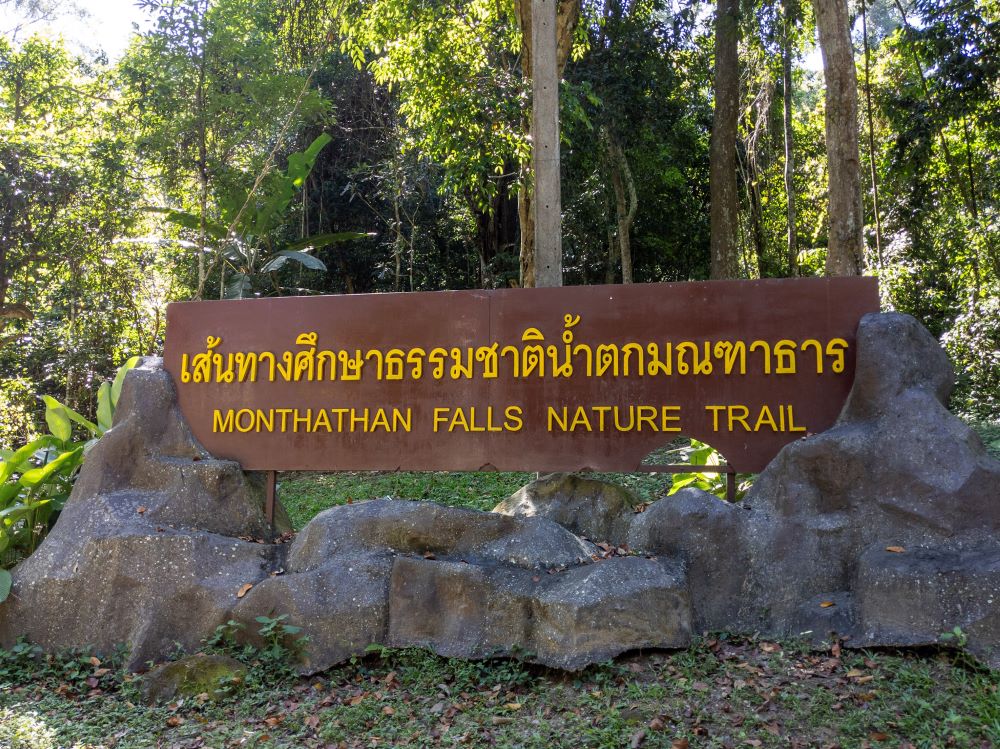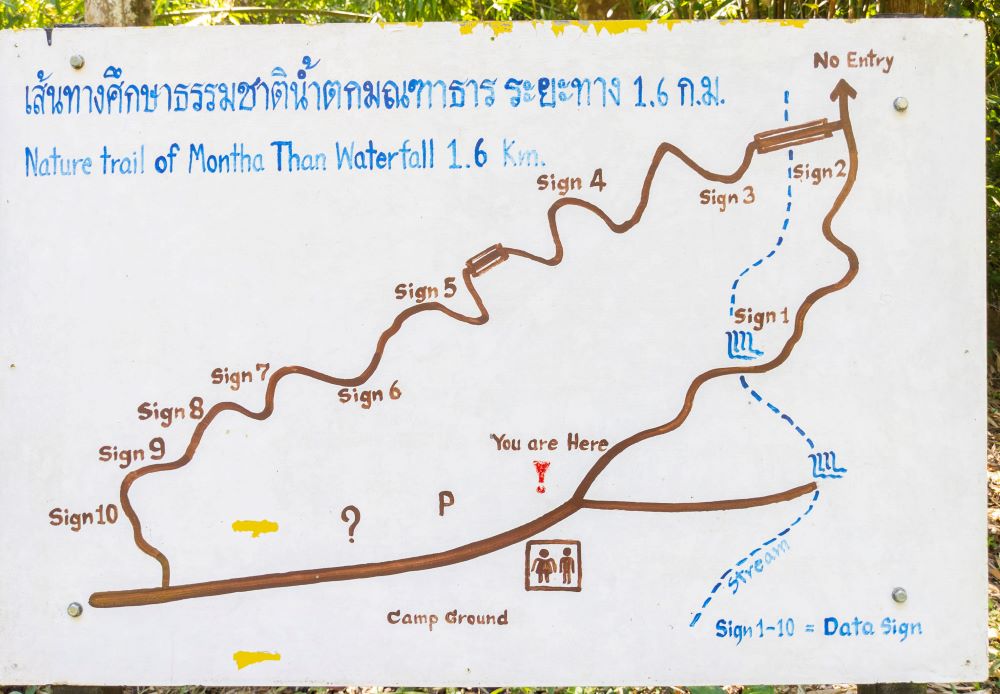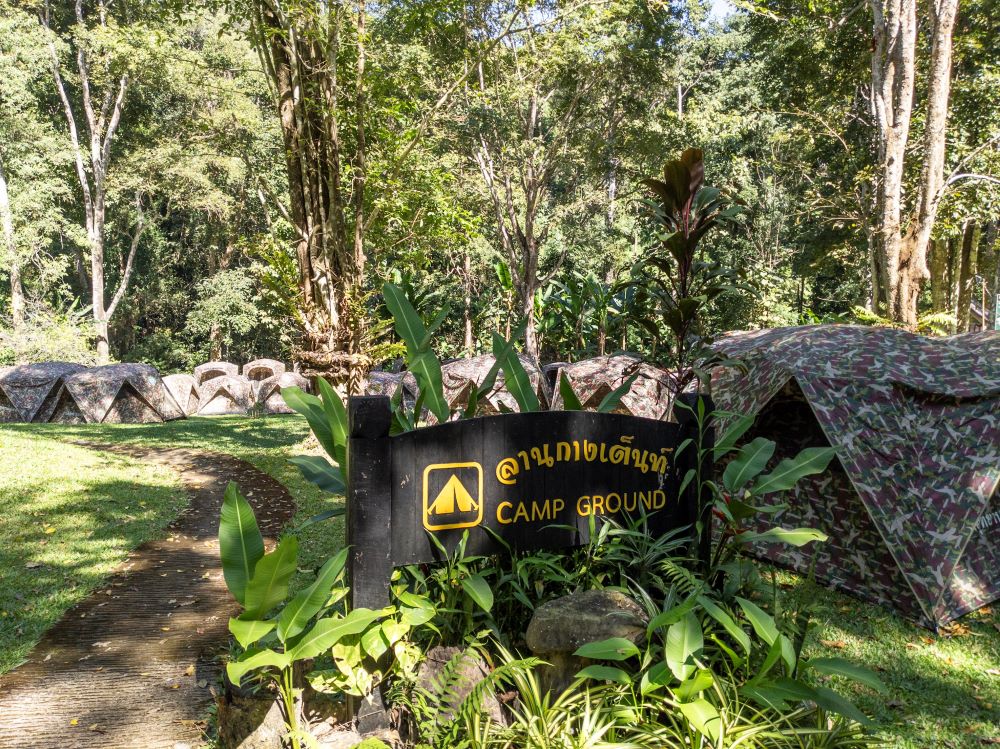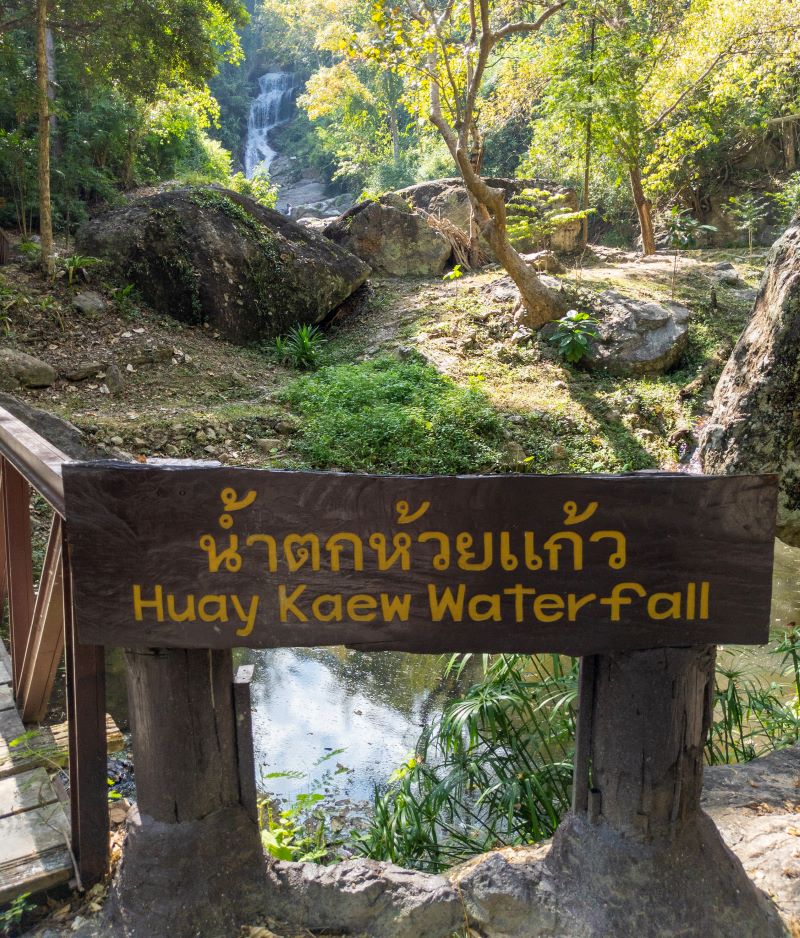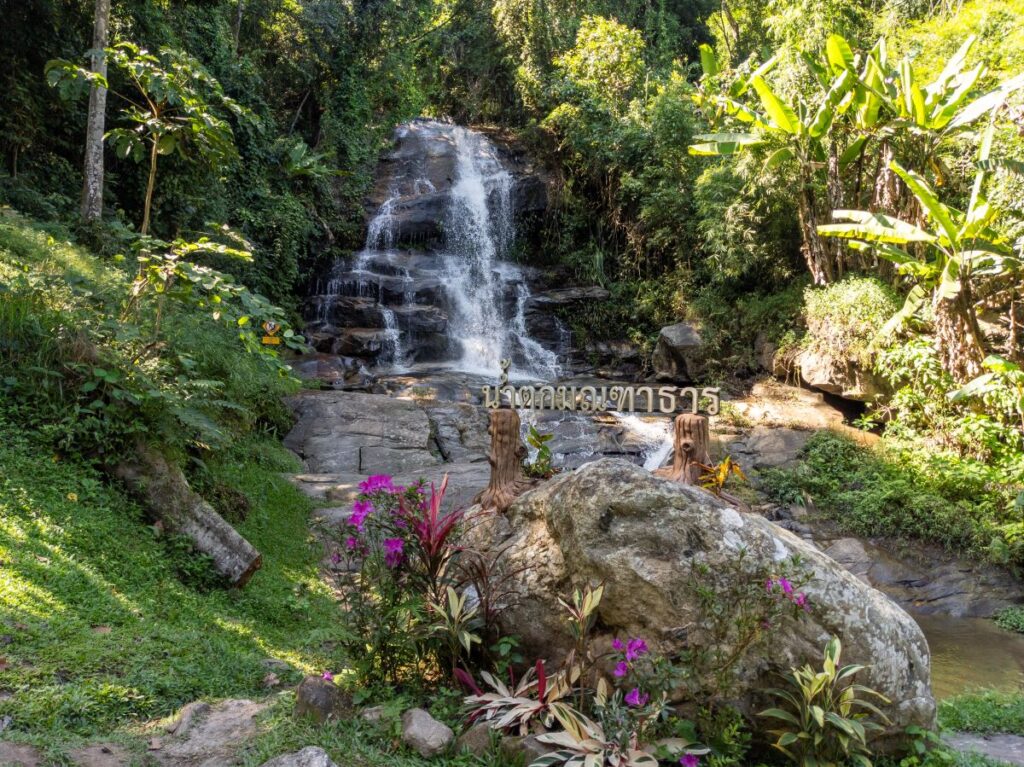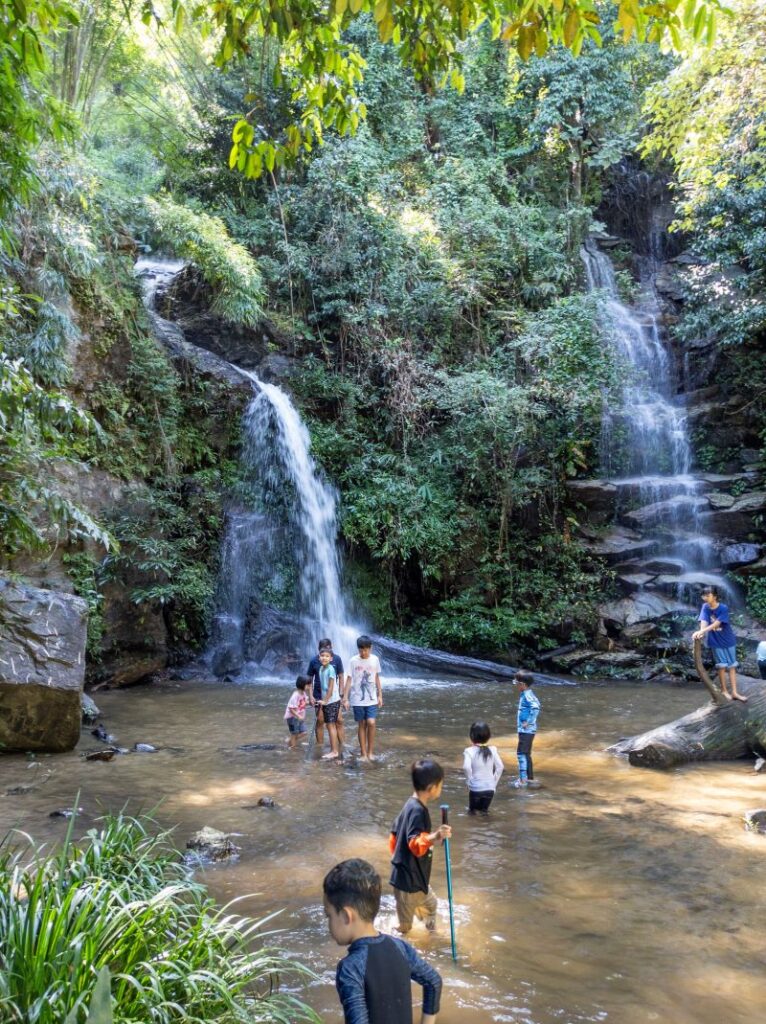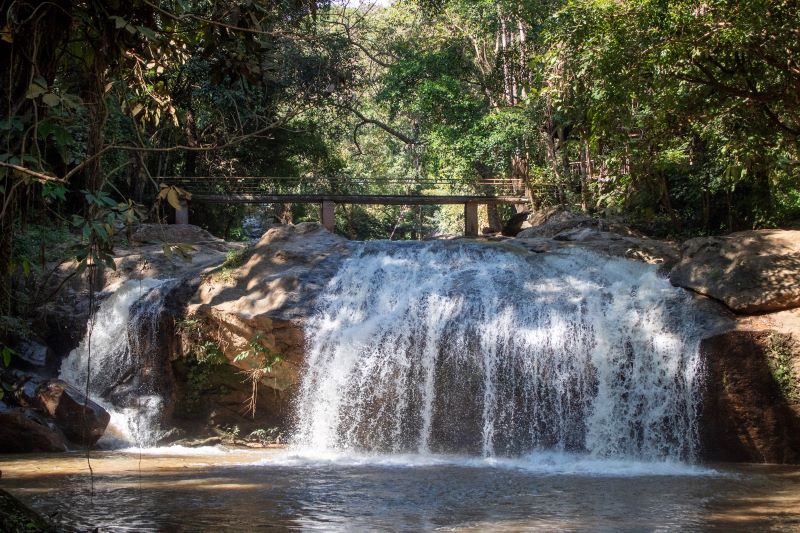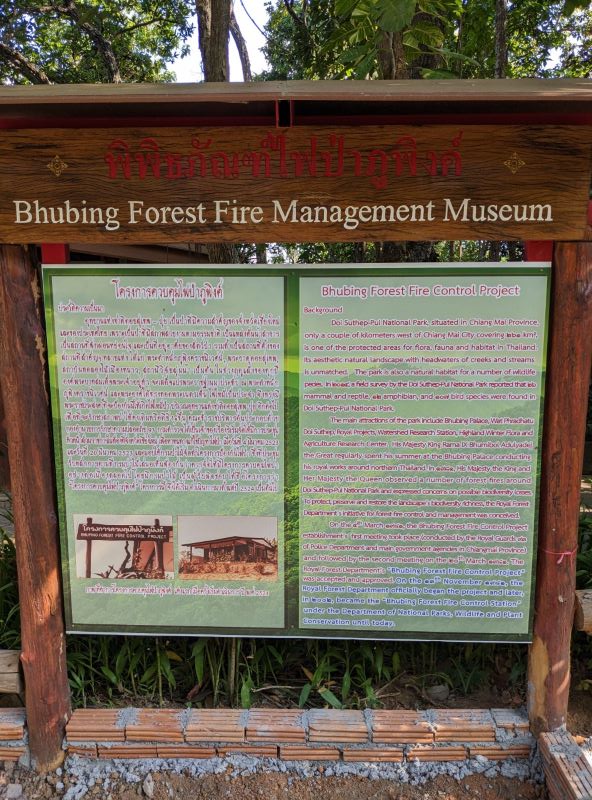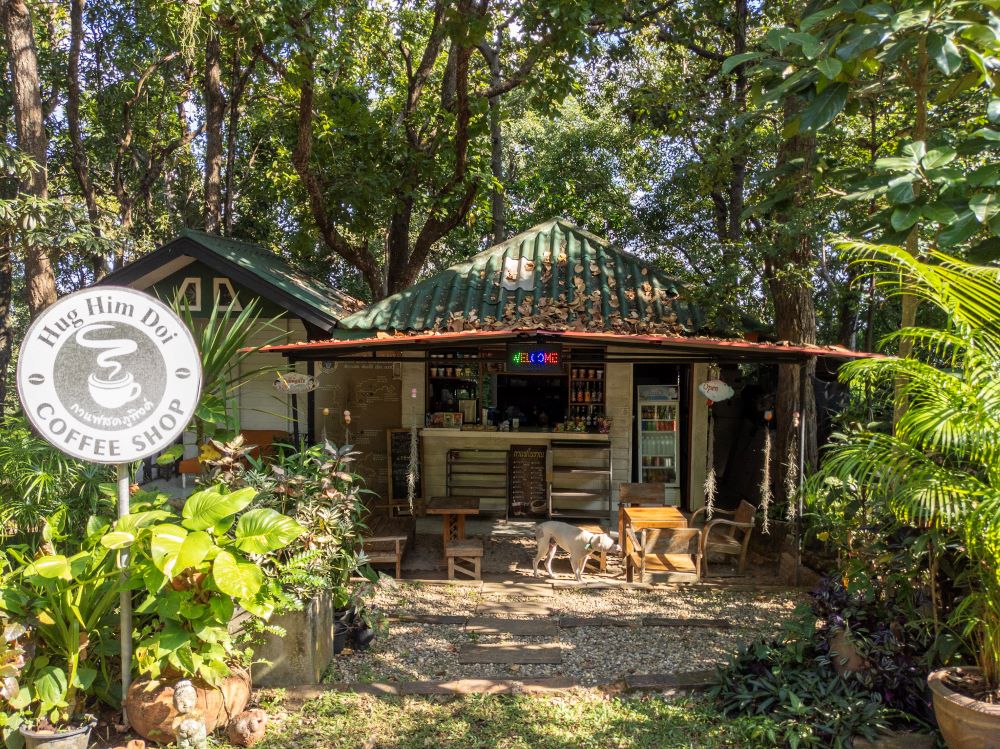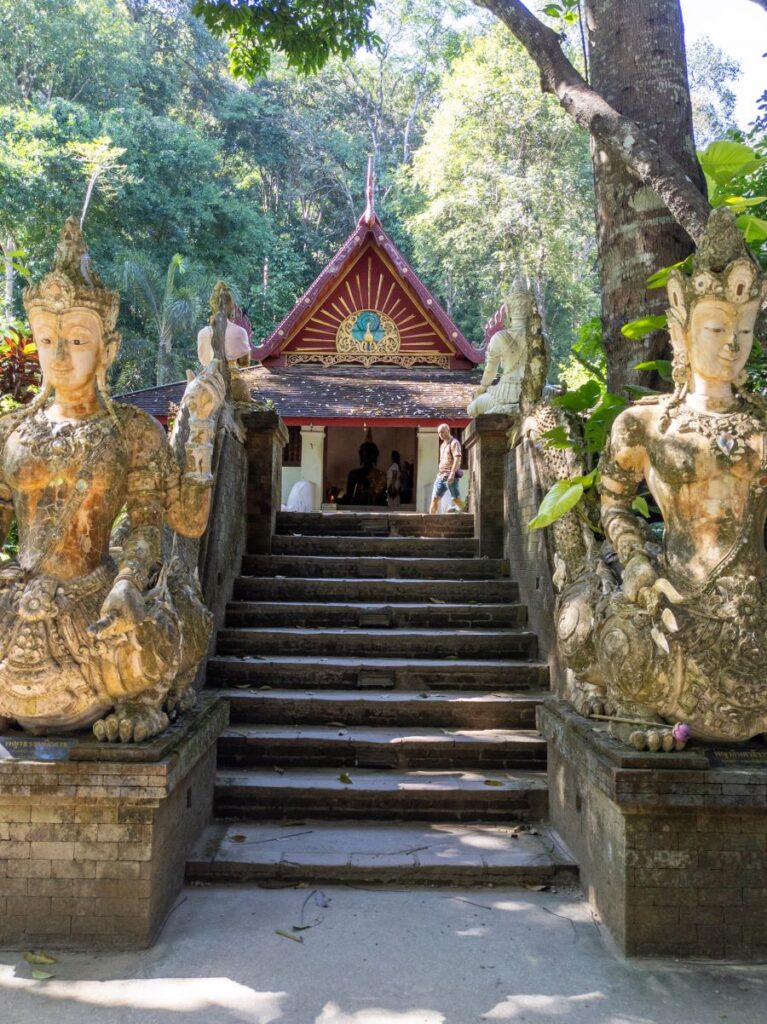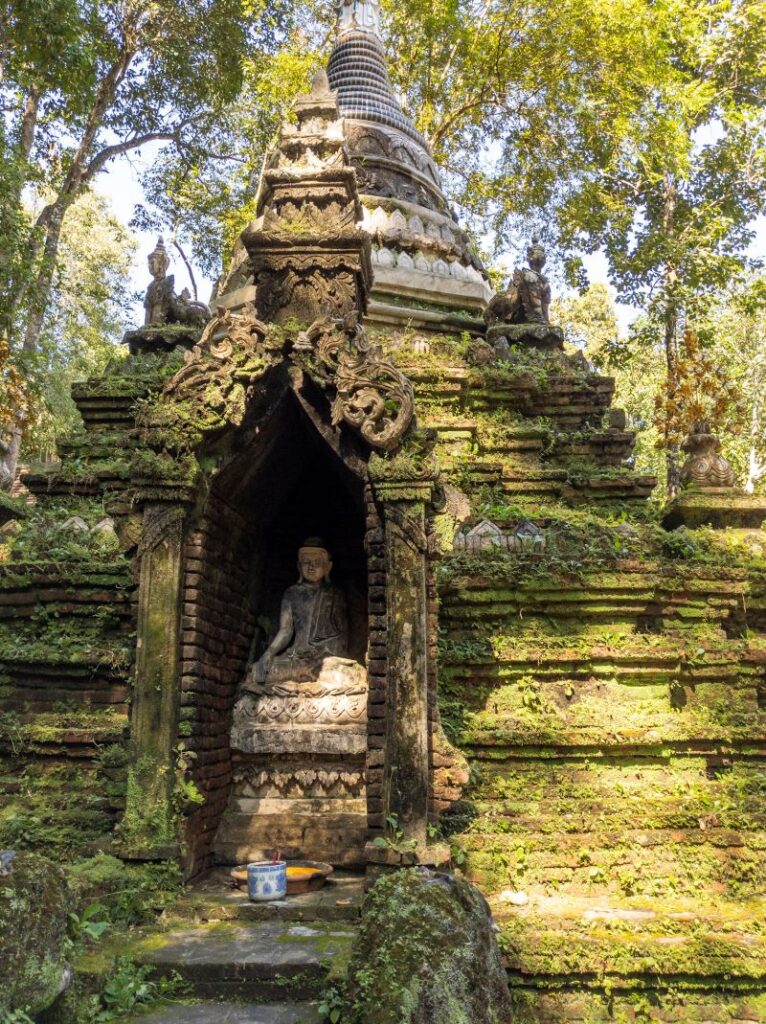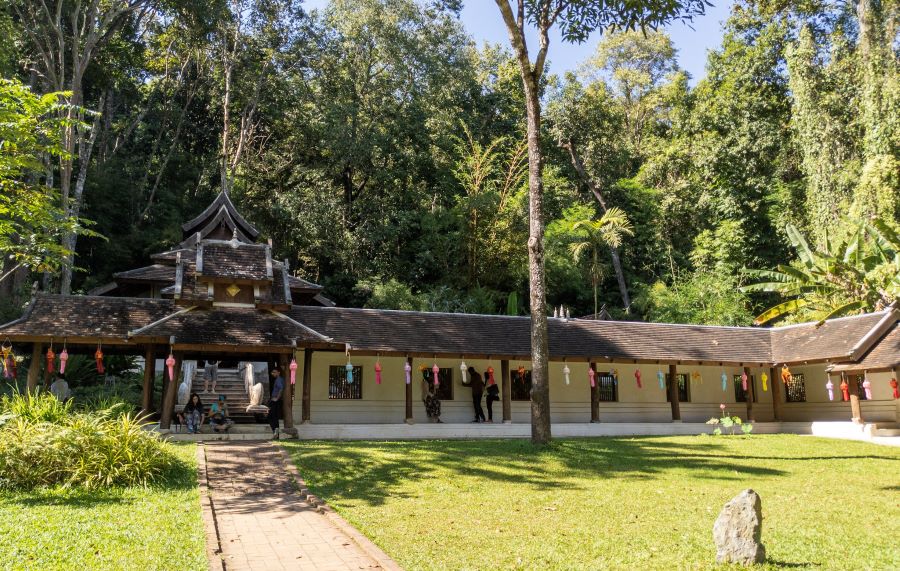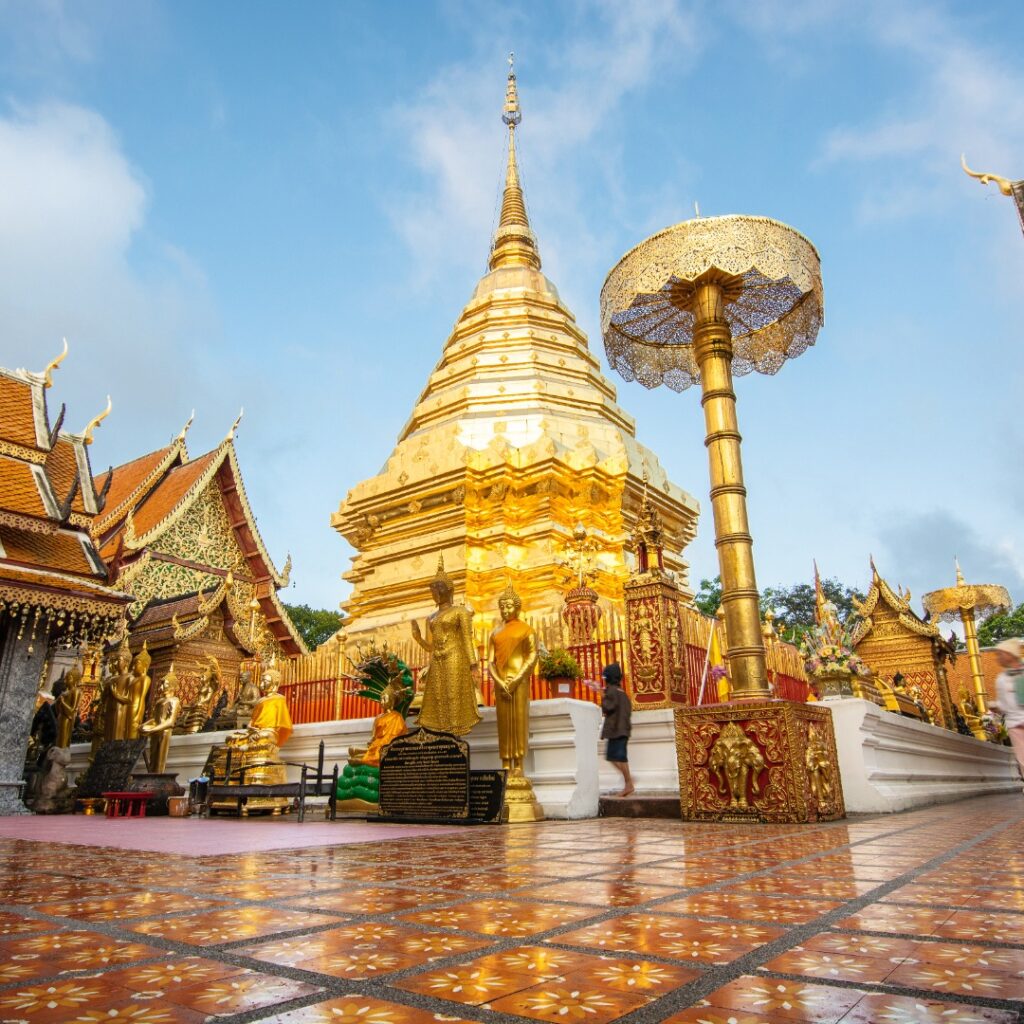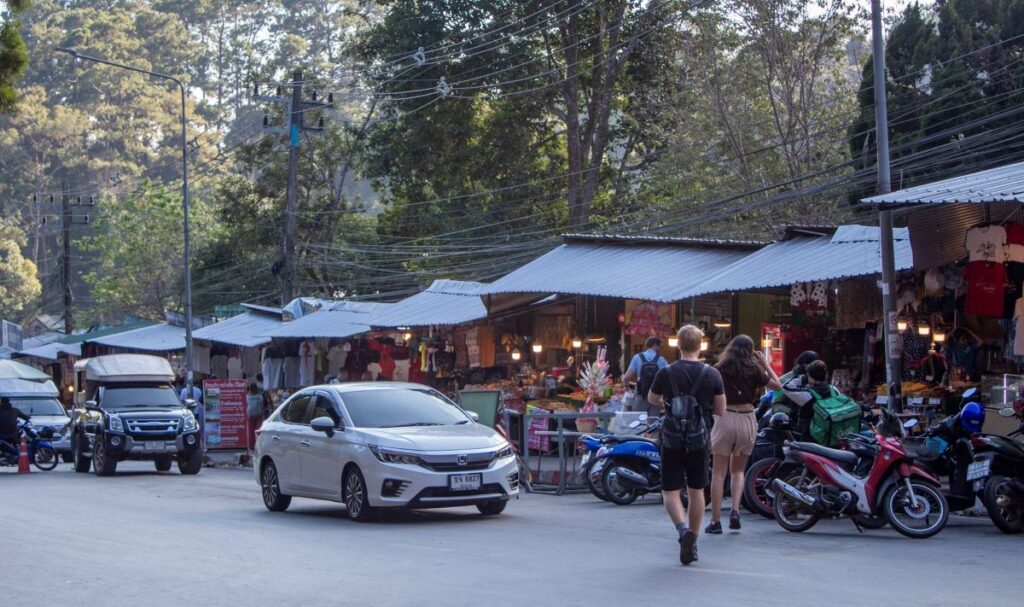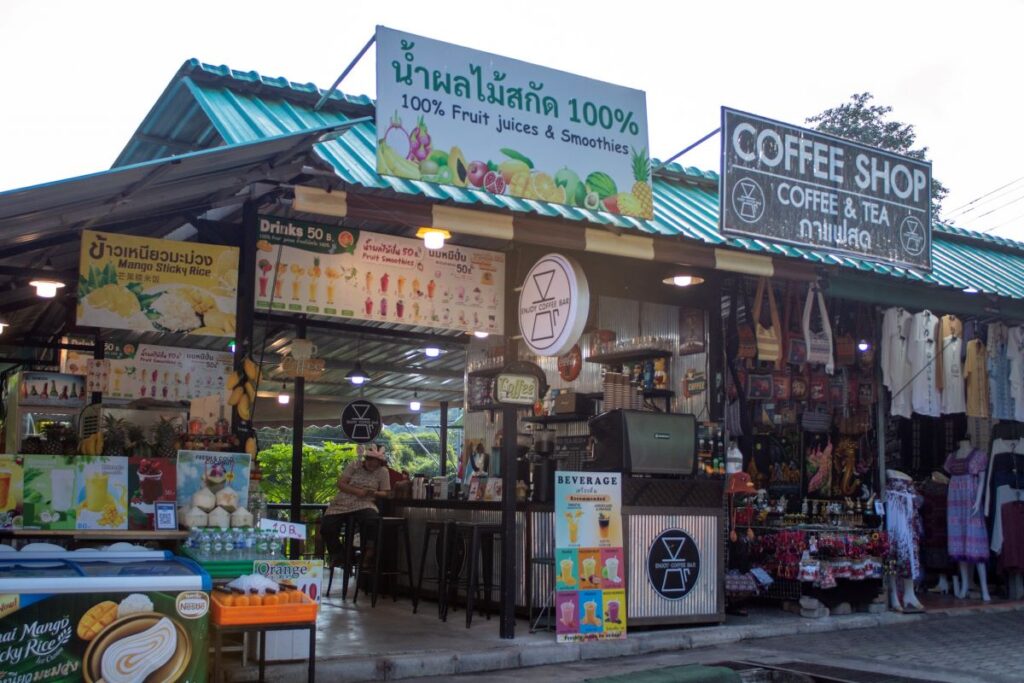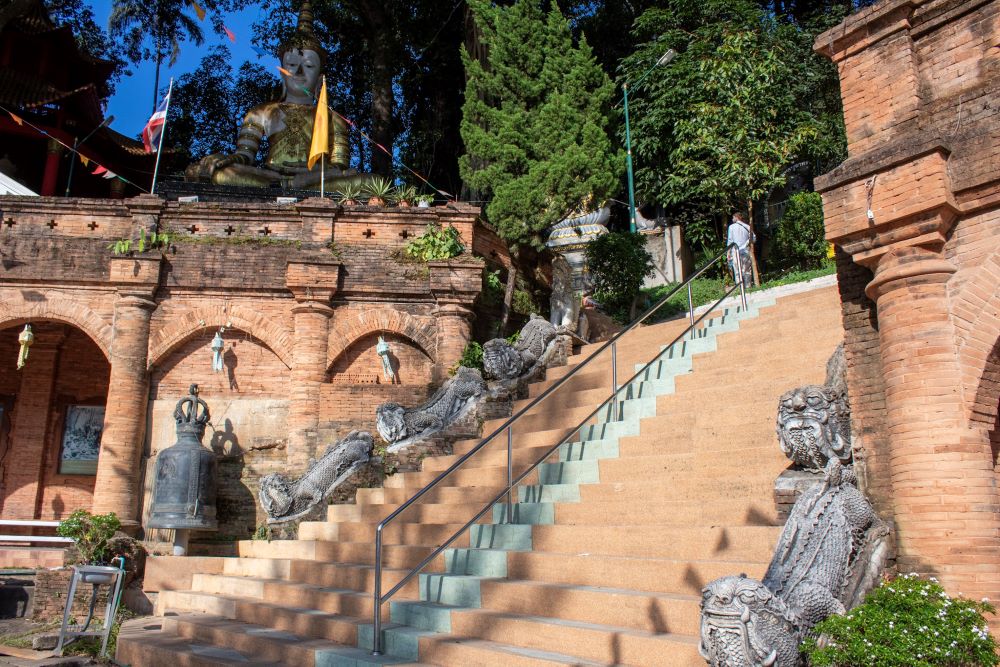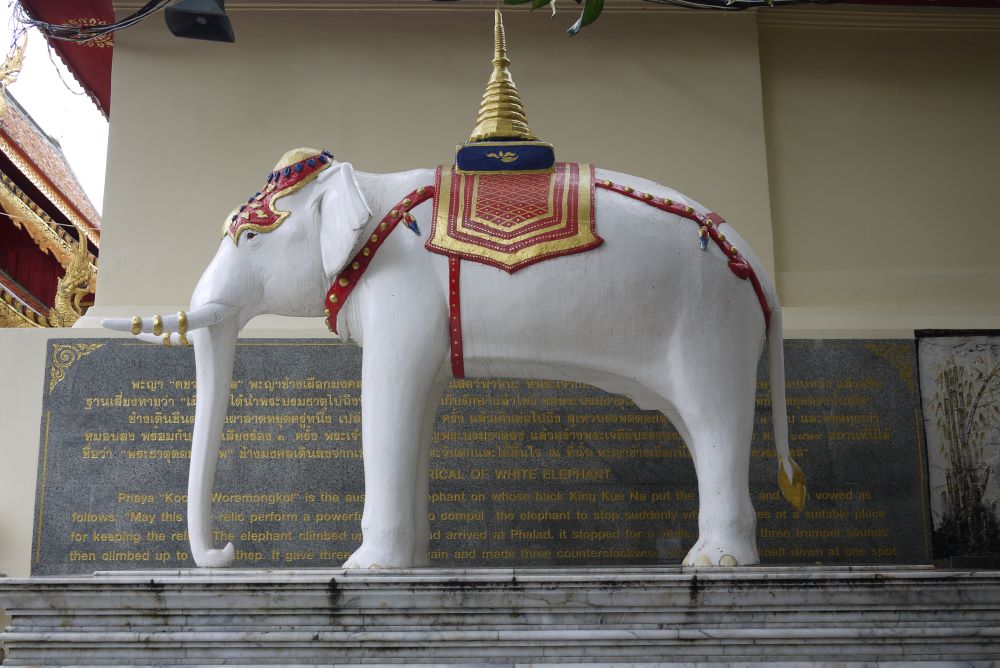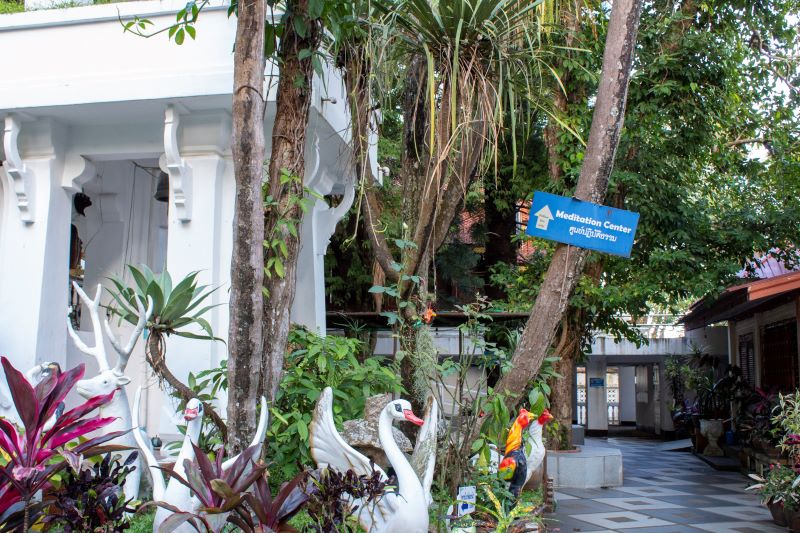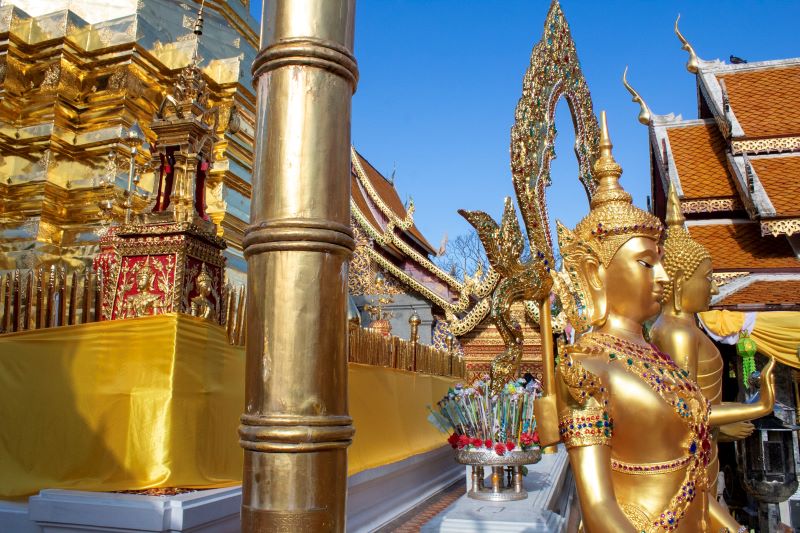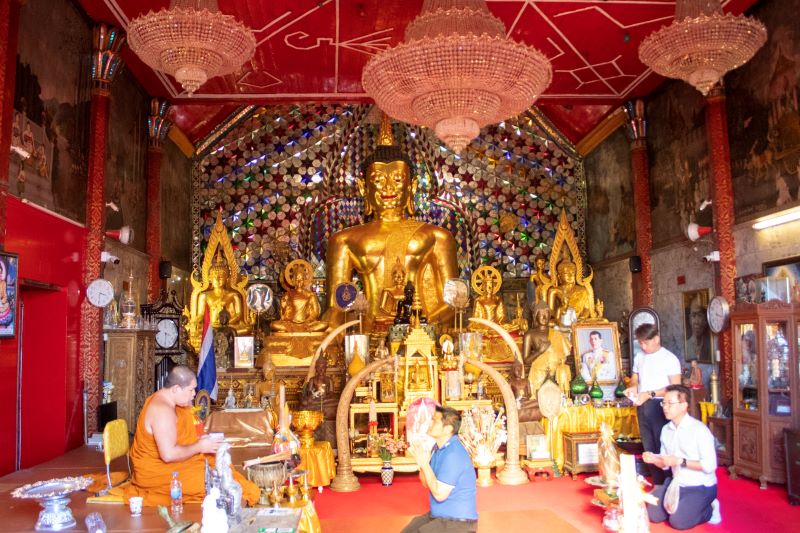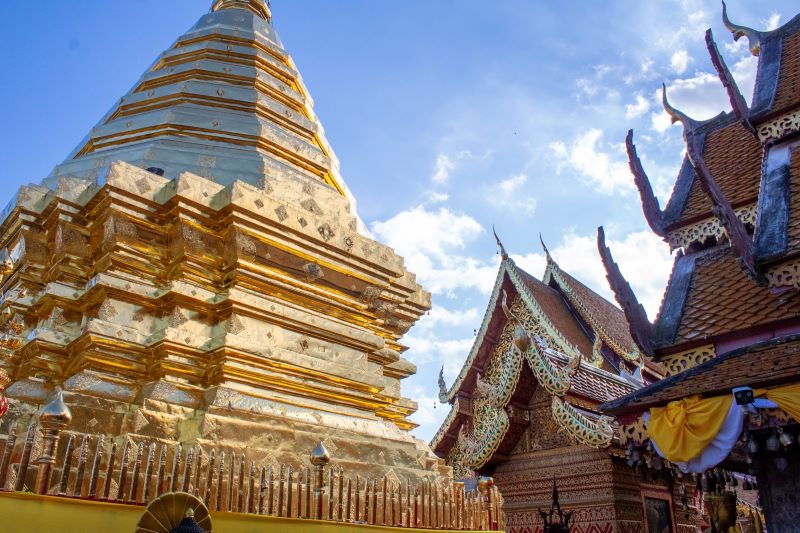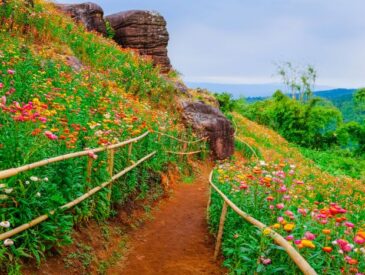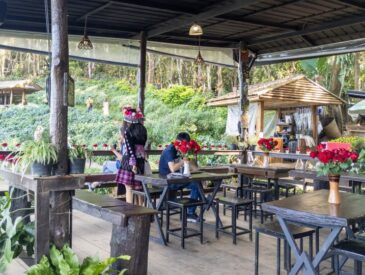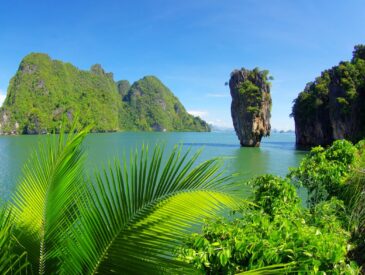(Updated August 2025) Doi Suthep-Pui National Park is for sure the most popular in Northern Thailand, besides Doi Inthanon. There are many great attractions and things to do, and being right next to the city make it a perfect place to go without having to travel far.
Of course there is the famous Wat Doi Suthep. And it is very popular with exercising, such as hiking and biking. Often there are organized road races and runs.
Formerly known as Doi Aoy Chang, Doi Suthep-Pui National Park is named after two mountains within the park; Doi Suthep and Doi Pui. Doi Suthep is where the hermit Sudeva lived on it’s slopes for many years. The park is situated in Chiang Mai Province, only a few kilometers northwest of Chiang Mai City covering 265 km².
The park is separated into two areas not bordering each other; In south Doi Suthep and Doi Pui area where most of the major attractions and the headquarters are, 10 km further north is a smaller area around Mok Fa Waterfall.
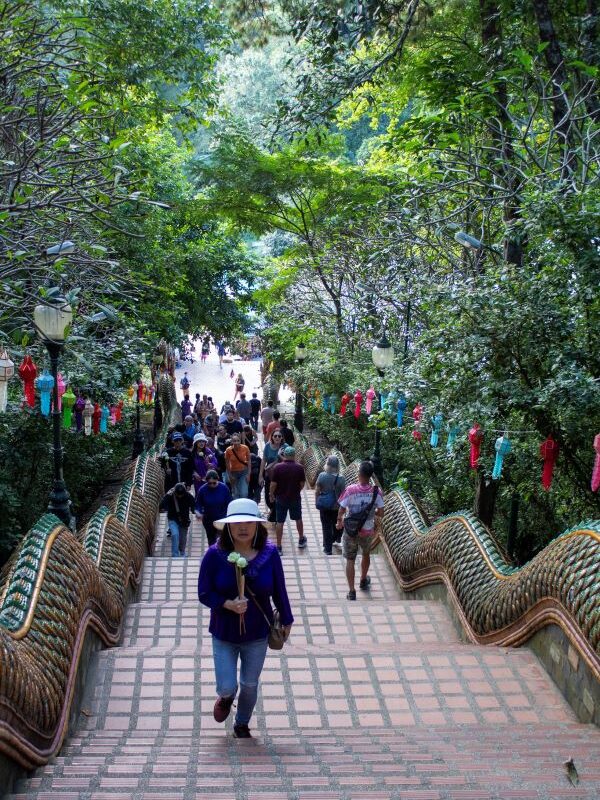
Contents:
Travel Resources:
Agoda is the best place to book cheap affordable hotels in Thailand, especially near national parks. They also book flights as well.
Expedia is my favorite place to book flights, hotels, cars, and more. Their group includes Hotels.com and Vrbo for vacation rentals.
Viator is the top choice for activities. Book everything from a waterfall tour to scuba diving, jungle trekking to cooking classes.
12Go is the top transportation source for Asia. From busses to trains to regional flights.
About Doi Suthep-Pui
The main attractions of Doi Suthep-Pui National Park are Wat Phra That Doi Suthep, Doi Pui Mountain, waterfalls, viewpoints and trails. Doi Suthep-Pui national park is one of the best in the country for hiking, thanks to its many trails throughout the park from all directions and elevations. Cycling is also very popular.
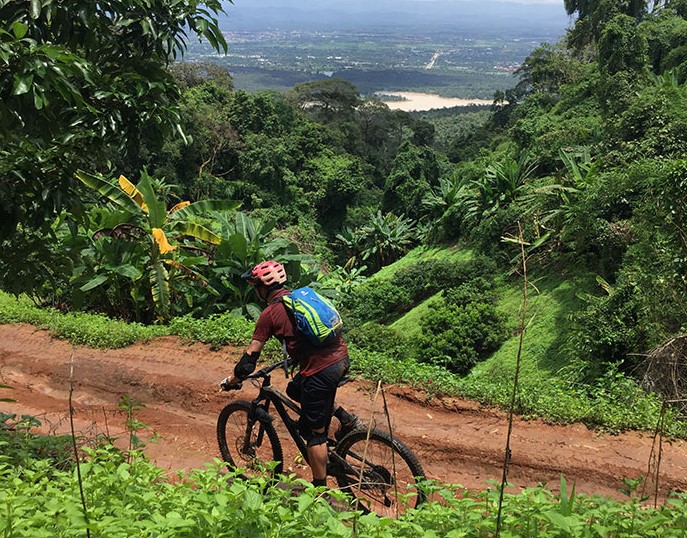
The main attraction area is the part closest to the city. However, since Pui is part of the same park, it extends to one of my favorite area towards Mae Rim.
The mountains in the park are within the Thanon Thong Chai Range, most of its bedrock is granite. Two of the highest peaks in the park are Doi Pui which is the highest in the park at 1,685 meters asl and Doi Buak Ha.
Despite being a busy place with quite a few villages in and around the park, there are some impressive mammal species recorded in the park. Dholes, which are a very rare species of canids, have been spotted in the park. Some of the other mammals seen in the park are Indian muntjacs, wild boars, Assam macaques, Indochinese serows, Asian golden cats, Malayan porcupines and Asian black bears. Butterflies are everywhere.
Perhaps not as rich as the nearby Doi Inthanon in variety, but Doi Suthep has an impressive fauna of birds with over 350 reported species. Some of the bird species seen in the park are; black-headed greenfinches, brown bush warblers, Tristram’s buntings, grey-winged blackbirds, dusky thrushes, chestnut thrushes, purple cochoas, chestnut-tailed minlas, yellow-browed tits, large blue flycatchers, Long-tailed thrushes and Himalayan cutias.
Getting There & Around
The park is in easy reach of Chiang Mai by car or bike from the west end of the city. Higher elevations beyond Doi Pui are better to be visited with a stronger terrain vehicle because of poor roads.
Getting to the park
It is possible to get to Doi Suthep Temple with a songthaew which is a converted pickup taxi. It can be tricky to find a convenient spot in Chiang Mai to jump into one. It takes less than 40 mins to reach the temple with the songthaew option.
Ask your hotel, they will be able to get you transportation by songthaew. You can use 12GO, which you can book local private transportation if you don’t have your own. Or you can book an inexpensive tour with Viator.
Outside Wat Doi Suthep is a huge area with food stalls, and lots of transportation back to the city.
Tours & private transportation
Most of the park can easily be explored without a guide. But, to hike longer trails or get to more remote places like villages, coffee plantations etc, a guide with an English speaking guide is recommended. Guided tours can be booked via various tour operators, or on arrival to the hotels.
I would recommend Viator. There are many choices.
Activities And Things To Do
Hiking
Doi Suthep-Pui is so great for hiking near to the city. There are numerous trails, some of which start at the bottom of the mountain by the city and university. This is what helps make them popular.
Monk’s Trail, is one of the most popular trails in Doi Suthep-Pui, starting from a trailhead west of Chiang Mai University and ending at Wat Phrathat Doi Suthep. Most people stop at Wat Phra Lat.
It takes around 1.5 hours to walk this trail. Half way through this trail in about 45 minutes hiking is my favorite temple around here, Wat Phra Lat. More on this temple below. Once on the road, the hikers need to walk a couple of hundred meters and continue the trail from the other side of the road.
The picture below is Monk’s Trail when you reach Wat Pha Lat.
Montha Than Waterfall Nature Trail, I discovered while visiting the falls. The entrance is by the waterfall. It is a short, 1.6km, but steep loop going up into the forest above the falls. The nice thing about this area too is that is almost completely shaded.
Buddha’s Footprint Trail is one you can take for a long ‘real’ hike in Doi Suthep-Pui. Starting from Doi Pui Hmong Tribal Village in the middle of the park, it is a 13 km trail. The trail head is right north of the village at about 1,320 meters asl. The highest point of the trail is at about 1,490 meters asl. Quite easy walk, but the length of it makes this trail a moderate one. A ranger or a guide is required to walk the trail. It may even be possible to arrange a local at the Hmong village for a small fee.
Camping
There are several places to go to spend the night in the trees up in the mountains of Doi Suthep-Pui. Because it is close to the city, the campsites are used for school groups and scouts often, so maybe you want to check on that first.
Montha Than Waterfall. Here is a great camp site, with a great waterfall and nature trail, which we mentioned above. The campsites are already set up with large tents, so you just rent them. I asked a couple different staff on the cost, but got two totally different answers. But I believe the 500 baht was correct. On site are firepits, and great restroom and shower facilities. There are also a couple cabins that can be rented.
Yod Doi Pui Campsite is located north of Bhubing Palace, accessible from the road that turns right 900 meters west from the palace and then 3.8 km further north. The campsite has basic facilities, a visitor center and a restaurant.
The camp visitor center has tents and mountain bikes available for rent. Two people tents cost 225 Baht per night, sleeping bags and other accessories are also available for rent from 60 Baht. It is possible to rent a tent with all accessories for 405 Baht. Mountain bikes cost 100 Baht a day.
Camping visitors are recommended to use warmer sleeping bags as night temperatures may drop down to as low as 5-6 °C.
Waterfalls
In Doi Suthep-Pui there are numerous waterfalls to relax by, take a hike, or cool off in the water. They are small, especially compared to places like Doi Inthanon National Park. However they are pleasant, especially to have a picnic.
Huay Kaew Waterfall is the first one, before you start up the mountain in Doi Suthep-Pui. Near Chiang Mai University. It is on the left hand side as you start to go up the mountain to Doi Suthep, just past Chiang Mai Zoo. A small but nice waterfall with lots of large rock areas and grass to have a picnic.
Just past the parking lot is a small road you take to get the the river area and then waterfall. Along the road are food stands and drinks, so if you don’t bring any food, there are plenty of local options. This is a popular area with the university students, since it is close by. Also of course there is a great hiking trail.
Montha Than Waterfall. It is mentioned in our hiking and camping sections. The waterfall is small but beautiful. It has two levels, so you hike a steep trail to get to the upper part. The upper falls is where the kids like to play in the water.
To get there, on route 1004, you will take a right turn into the entrance. There is a large sign from the road, but it does sneak up on you. Lots of grassy areas for a picnic, and best of all there is a big tree canopy, so it is almost all shady.
Mae Sa Waterfall is far north of most of the other attractions in Doi Suthep-Pui. Located off route 1096 in the Mae Rim Area. For more read our article.
Mae Sa Waterfall is a popular 10-tiered cascading waterfall along a nearly 2.5 km trail into the forest. This is a very popular local attraction for the area.
There is a very nice trail going all the way to the 10th tier. Some of it is boardwalk and bridges, giving you great views for photography. Each tier is marked by a sign. Since the individual falls are not that high or fast-moving, they are ideal—and popular—for swimming.
Mok Fa is a waterfall is in the northern most part of Doi Suthep-Pui. Accessible by car, bike or songthaew. The waterfall is located further north of Mae Sa Waterfall, just 1.4 km from the highway 1095 to Pai. The waterfall is about 5-10 minutes walking distance from the car park. There is a visitor center and a number of rooms for rent for 1,500 Baht per night.
Bhubing Palace
Built in 1961, Bhubing Palace is the royal winter residence to accommodate the royal family during their visits to northern Thailand and Doi Suthep-Pui. The official name of the palace is Phra Tamnak Phu Phing.
The palace is 4 km west of Wat Phra That Doi Suthep. There are a number of buildings including guesthouses for state visitors from abroad. The palace is open to the public except when the royal family is in the residence. The area is ideal for birdwatching, butterfly watching and has a good view over Chiang Mai. Opening times are 8:30 am to 4:15 pm, but sometimes may get closed as early as 3 pm.
Forest Management Museum
Before you reach Wat Doi Suthep, on the left side of route1004 is a very cool museum. It is the Bhubing Forest Fire Management Museum. As you would expect, there is a museum on site, showcasing the history, as well as old equipment, and their purpose in Doi Suthep-Pui.
We actually just stopped here because I wanted to get a coffee, and there is a nice little one on the site. However the owner runs it, and it is not always open.
I bet you won’t find this in anyone else’s guides.
Temples
Without question, the most famous sight on Doi Suthep-Pui National Park is Wat Doi Suthep. Probably the most visited and photographed sight in Chiang Mai. However there is also another amazing temple before you get to Doi Suthep, which is Wat Pha Lat. It is completely different, and I think more interesting.
On the mountain side of Doi Suthep-Pui national park, above Chiang Mai city, sits Wat Pha Lat. I accidently stopped with a friend to check it out, and it quickly became one of my best 5 temples to see. I knew about it, as it is on the local hiking trail called Monk’s Trail. Which was used by the monks to walk up to Wat Doi Suthep.
Wat Pha Lat
The temple is located on route 1004 before half way up the mountain on your way to Wat Doi Suthep. Most people just pass by on their way up to Doi Suthep. It is only about 15 minutes from the city, depending on a couple traffic lights!
What I love about it is that it is not your typical looking temple. Similar to Wat Umong, it is shady is the forest, with smaller unique buildings and structures, such as the river running through it.
According the the temple plaques, the construction is not know. But the temple name appeared during the time of Kin Kue Na when he rode his elephant to bring relics of the Buddha from Sukhothai to be enshrined at Wat Doi Suthep and stopped at Pha Lat for a rest.
The stupa is a Bagan-style round stupa, surrounded by a circumambulatory path. It has a niche enshrining the Buddha image on the south side and stucco lions and deities at the corners of the base.
The Hall of Buddha is in a state of ruin, only its base remains.
Wat Phra That Doi Suthep
Doi Suthep, as it is commonly called, is considered the top must see temples in Chiang Mai. Heavily visited, it is located in Doi Suthep-Pui National Park. However it’s only about a 14km drive up the mountain from Chiang Mai city center. Except it still takes some time, as it’s a steep one lane road, with often slow vehicles.
Sitting at an elevation of about 1100m (3500), you are treated with sweeping views of Chiang Mai from the grounds of the temple.
The parking area is large with dozens of food stalls and souvenir shops. So you can easily eat a good lunch if you need to. Dress accordingly, for women no shorts allowed and shoulders must be covered.
The entrance area itself is very impressive, and set up for tourism. From the parking areas, the temple is reached by walking up 309 step steep stairs. There is a tram type ride for those who don’t want to do the steps. Here is Belle barely making it up!
When you enter the temple grounds, to the left is the White Elephant Monument. It represents the white elephant chosen by King Keuna of Chiangmai to deliver the Buddha’s relic to the place that the elephant would stop (as explained previously).
The auspicious white elephant walked up to the top of Doi Suthep, where the Buddha relic was placed and has been kept since then.
The name of the Temple (Wat Phra That Doi Suthep) actually explains what the temple has. Phra entails of an honorific Buddha image, and That means a relic. The original gold plated chedi is the most holy area of the temple grounds. Within the site are pagodas, statues, bells, a museum, and shrines. There is a well renowned meditation center here.
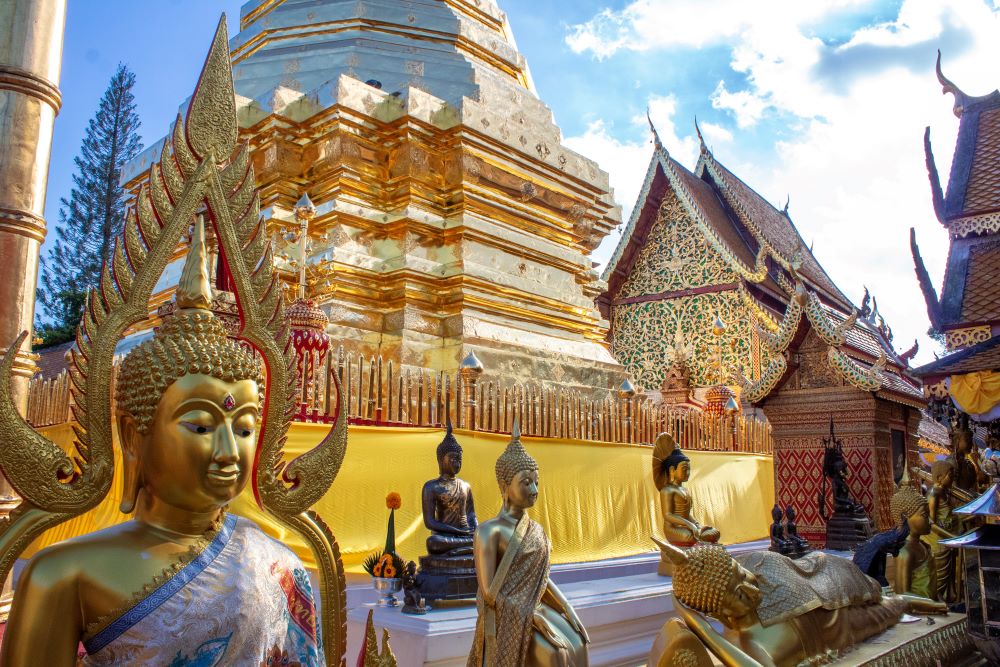
This temple has a special place in our hearts. My wife took me here on our first date! It has special importance to Thai, and she wanted to share that with me.
Since this is the most visited temple for Chiang Mai, it gets crowded. I mean, we are talking about large tour busses full. It really does not matter, except it makes photography inside more difficult, as people are always in the way.
For nearby hotel information, visit our Chiang Mai 2025 guide. I would suggest staying in the Neimenheiman area or the Old City. Both are just minutes from the park.
I hope you can make it to Doi Suthep-Pui National Park. And I hope this guides helps plan your trip. Any Further questions please send us an email.
Don’t forget Travel Insurance, you never know!
